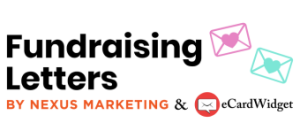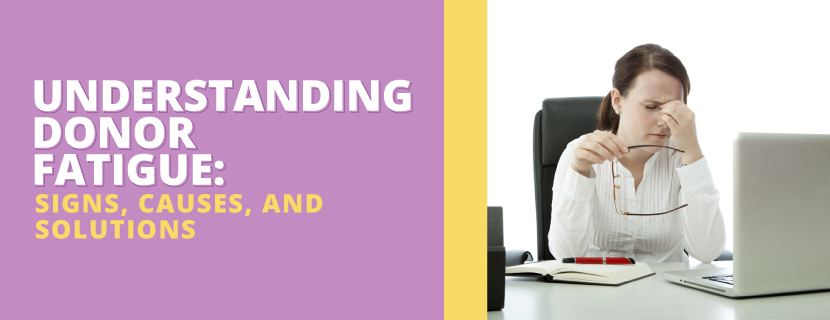Understanding Donor Fatigue: Signs, Causes, and Solutions
Imagine this: You open your monthly report and notice some abnormal trends. Mid-level giving has dipped. A donor who reliably gives at year-end has been silent. A loyal monthly donor’s contributions have become infrequent. You know your mission is still worthy, so why has their behavior changed?
It’s donor fatigue. And that’s not just a trendy catchphrase or theoretical concept; it’s actually a practical threat to the sustainable revenue you need to plan programs, grow impact, and keep the lights on.
The kicker is that donor fatigue is a symptom of a faltering engagement strategy. However, that means you can take steps now to keep donors engaged or even bring back those who are drifting away.
In this article, we’ll explore why donor fatigue occurs and provide tactical, immediate solutions to keep your donors engaged.
Uncover the Causes of Donor Fatigue
Donor fatigue happens when supporters feel overwhelmed, undervalued, or disconnected from your mission and unsure about the impact of their support.
To identify the specific causes of fatigue affecting your supporters, leverage your donor management software. As CharityEngine explains, this software tracks all donor information and interactions to give you a complete picture of where your supporters stand.
However, there are a few general pitfalls that fuel donor fatigue across organizations:
- The over-solicitation trap: Too many asks, period. If every donor touchpoint costs them money, they’ll start avoiding your communications. Supporters want various ways to engage beyond monetary contributions.
- The generic ask: Donors don’t want to feel like a line item on a spreadsheet or like you’ve crafted emails using copy and paste. Personalization makes donors feel seen and appreciated as true partners in your nonprofit’s mission.
- Impact amnesia: If you don’t close the loop by explaining how a donation helped your mission, donors may feel like they poured money into a bottomless pit. Connect the act of donating with the feel-good results, and donors will feel invested in your cause.
While staying aware of these common pitfalls is important, only you know your donors, and you’ll recognize the unique signals that something’s amiss! The sooner you act, the quicker you’ll reengage your supporters.
How to Prevent (and Address) Donor Fatigue
1. Identify Red Flags and Intervene Early
Donors won’t get fatigued overnight. If you pay attention, you can see subtle shifts that indicate your engagement strategies need refinement.
Here are five red flags and some suggestions on how to act on them:
- Decline in gift frequency: Regular giving followed by a sudden pause in contributions for an extended period of time is an early warning sign of donor fatigue.
- Use your fundraising software to run a report highlighting those with declining giving frequency. Send a personalized note to each individual, just checking in rather than asking for a donation.
- Smaller average gifts: Similar to a decrease in gift frequency, reduced gift size may signal the early stages of disengagement.
- Pick up the phone! Call to thank donors for their most recent gifts and share specific stories about how their contributions impacted your mission.
- Missing events: If your nonprofit plans an event, and a supporter who usually attends fails to show up, they may also start to disengage with your organization in other ways.
- Send a personal note expressing your gratitude for their support and letting them know you missed seeing them.
- Email disengagement: Declining email open and click-through rates, among other metrics, show that fewer supporters are interacting with your communications.
- Test new subject lines or calls to action (CTAs), and create email templates that follow best practices to boost engagement. You can even switch to a different channel for outreach (like phone calls, direct mail, or SMS) if necessary.
- Sustainer churn: A recurring donor who cancels their gift is likely experiencing fatigue. Once they stop contributing regularly to your cause, they’ll begin disconnecting in other ways, as well.
- Reach out with gratitude for past support, and then offer some alternatives. Donors may consider participating in your advocacy campaign, instead. Or, perhaps long-term volunteers want to make a monetary donation for a short period.
Share common red flags across the team so everyone is aware of signs that forewarn donor fatigue.
2. Sharpen Your Ask With Personalization
Instead of feeling like another name on your nonprofit’s long list of supporters, each donor should feel individually recognized, appreciated, and needed by your organization. Tailor messages to recipients’ unique interests and motivations.
Segment recipients into groups based on shared characteristics. Here are some segmentation criteria you can consider:
- Interests: Focus on projects, programs, and activities that supporters have historically shown interest in. For instance, consider which fundraising causes or projects donors contributed to. Also, track volunteer data to identify which projects and events appeal most to those who donate their time.
- Last gift: Your outreach should be appropriate according to the recipients’ existing levels of involvement. For example, you don’t want to ask someone who donated three days ago for another gift or send another “urgent” message to someone who hasn’t given in 18 months. For recent donors, send gratitude messages and impact information. For long-lapsed donors, reintroduce them to your mission before requesting a donation.
- Prospects: If you’ve conducted prospect research and identified a group of potential supporters (or existing donors who might be willing to upgrade their gifts), that’s great! However, set them aside in a group that needs cultivation, so you know not to reach out to these individuals with donation requests just yet.
- Off-limits: Some people just aren’t ready to hear from your organization yet, and that’s okay. Hitting the brakes on reaching out to certain contacts shows donors you respect them.
Try applying these segments to your next campaign. Even adjusting one appeal with tailored messaging can instantly and dramatically reduce donor fatigue.
3. Automate Donor Retention Through Recurring Giving
Recurring giving is the gold standard for avoiding donor fatigue: donors give consistently without constant requests, and nonprofits can focus on showing gratitude and reporting their impact. This type of program keeps them engaged with your mission.
Here are some quick tips to fortify your recurring giving program:
- Optimize your donation form. Make the recurring option the default or most visible choice. Keep fields to a minimum so signing up is frictionless.
- Invest in payment recovery. Expired credit cards are a leading cause of sustainer churn. Use automated card updater tools or soft retries to prevent donors from having to re-enter details.
- Track relevant metrics. Don’t just watch total recurring revenue. Track retention rates, average gift size, and churn reasons to help you spot trends and take action quickly.
It can be helpful to craft a donor journey for recurring givers. They don’t need heavy solicitation, but you should remind them often that their ongoing commitment fuels growing impact.
Donor fatigue poses a significant challenge for nonprofits. But once you realize it’s not that donors are losing interest, you can take a close look at your engagement strategies and see what you need to tweak.
When your team is attuned to early warning signs and can avoid common pitfalls, you can quickly develop strategies around personalization and recurring giving. The result? You’re protecting revenue and strengthening donor relationships.
At the end of the day, donors don’t want to feel like a nameless cash machine. They want to feel like partners in your mission. When you treat them that way, you’ll banish donor fatigue and win long-term support.




